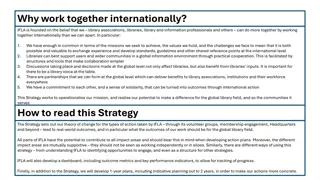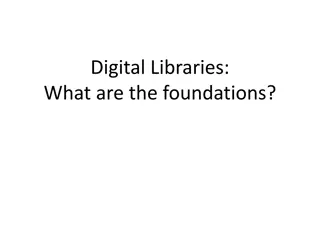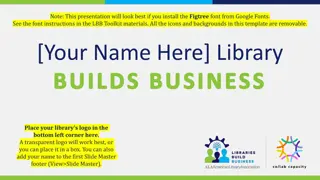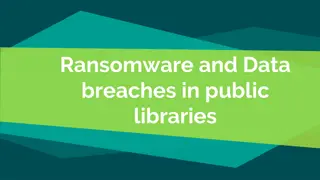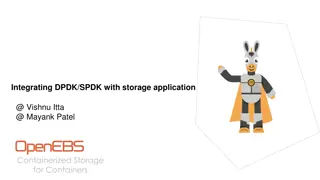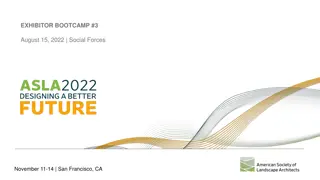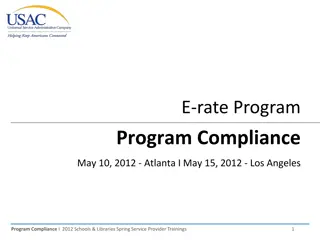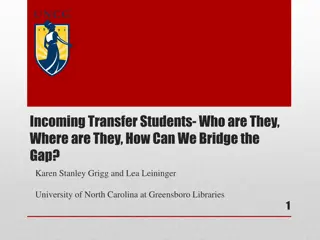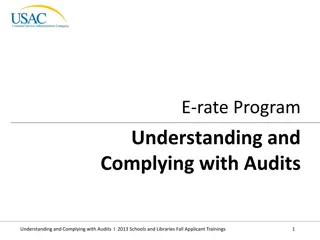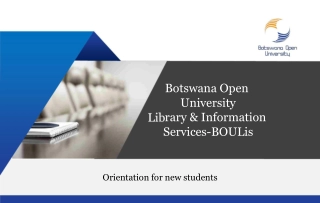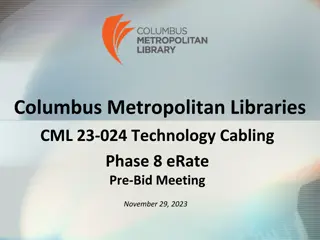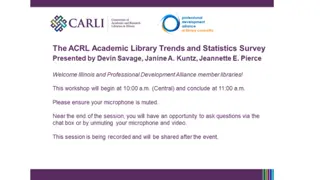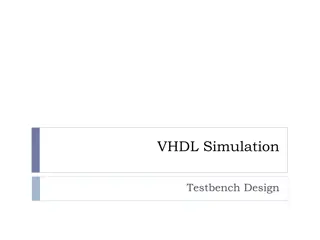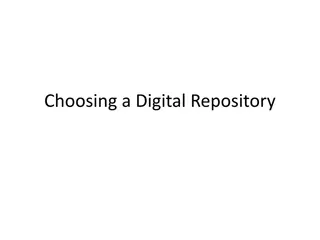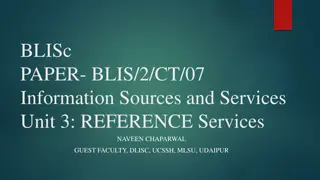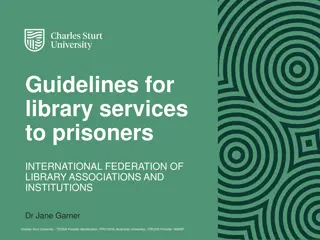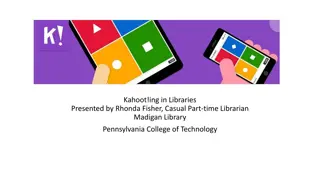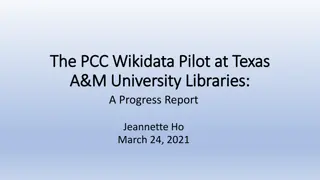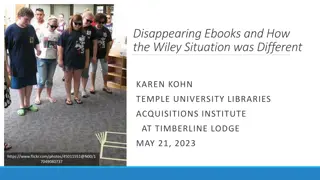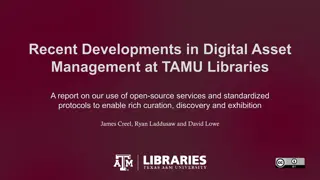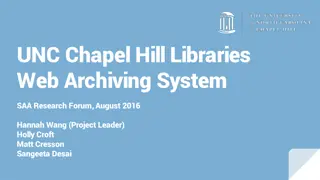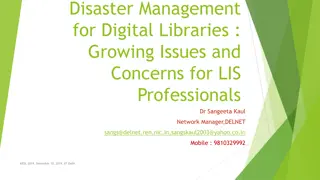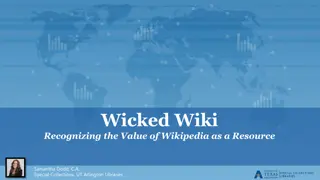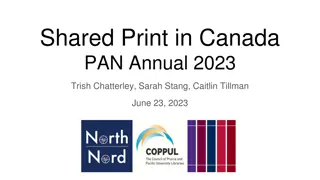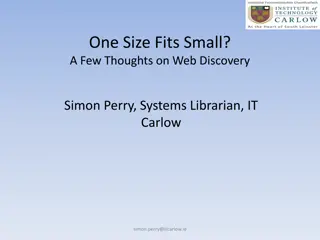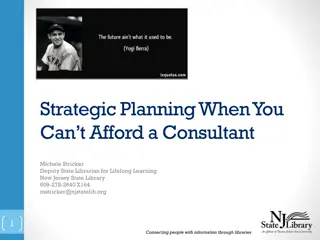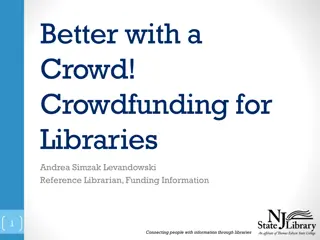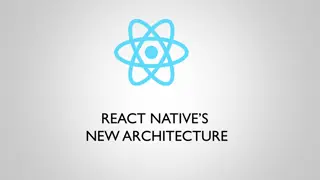Understanding Microservices Architecture for Libraries
Gain insights into microservices architecture, its significance in software development, and its growing adoption in library applications. Explore the shift from monolithic to microservices approach, key features of microservices, and their role in assembling complex business applications. Compare software development styles between monolithic and microservices architectures.
Download Presentation

Please find below an Image/Link to download the presentation.
The content on the website is provided AS IS for your information and personal use only. It may not be sold, licensed, or shared on other websites without obtaining consent from the author. Download presentation by click this link. If you encounter any issues during the download, it is possible that the publisher has removed the file from their server.
E N D
Presentation Transcript
Microservices Architecture and Apps for Libraries Marshall Breeding Independent Consultant, Author, and Founder and Publisher, Library Technology Guides https://librarytechnology.org/ https://twitter.com/mbreeding Internet Librarian 2018 October 17, 2018
Summary Get an introduction to the microservices architecture and how it differs from the monolithic style of software development. Microservices have emerged as the preferred approach for complex business applications deployed at massive scale. This architecture has increasingly been incorporated into new applications for libraries. Breeding provides perspective on how this style of software development and deployment will increasingly enter the library sphere.
Fundamental technology shift Mainframe computing Client/Server Cloud Computing http://www.flickr.com/photos/carrick/61952845/ http://soacloudcomputing.blogspot.com/2008/10/cloud-computing.html http://www.javaworld.com/javaworld/jw-10-2001/jw-1019-jxta.html
Microservices Current prevailing approach for large scale globally distributed applications Common choice for new development projects for business software Many organizations are also evolving existing monolithic applications to Microservices
What are microservices? A model of technical architecture Small independent functional applications Each microservices built on appropriate technical components A software development pattern Decentralization of technical components Distributed programming / DevOps teams Responsibility to deploy, operate, and maintain services
From apps to systems Many microservices are assembled to create a complex business application Separate independent components Brought together via middleware or API gateway
Software Development Styles Monolithic Applications Codebase of application deployed as a single bundle of executables and libraries on a unified platform Microservices Architecture Multiple independent software components orchestrated to form a unified application Common infrastructure: User interface toolkit API Gateway Persistence layer
An internal architecture Not necessarily apparent to users whether the application is based on microservices Needed for fast performance, high availability, extreme transaction loads Decentralized architecture does not imply fragmented user experience
Who uses Microservices Uber Netflix Amazon Ebay Twitter PayPal
Alternative approach: Monolithic software Consolidated executable application Plus supporting libraries and modules Can be massively distributed across computing clusters Entire application based on a uniform technology stack: Server platform Operating system Programming language Database layer Enhancements mean recompilation of entire application
Monolithic Application Conceptual Model Scripts/ Third Party Systems User Interfaces API endpoints Web service Presentation Layer Application software Business Logic Run time libraries Database Engine Table Table Table Table Table Table Table Table Table Table Table Table Table Table Table Table
Services-oriented Architecture Longstanding approach to business application development Monolithic application based on reusable services Complex applications rely on an enterprise service bus to manage communications among services, database connectivity, event triggers, etc Single uniform technology platform Code assembled into a monolithic package Scales to very high performance through clustered deployment
SOA development issues Services are closely interrelated throughout the application Developers must understand all aspects of the application Single technology stack Small changes require full recompilation Complex applications can hit hardware or OS limits Centralized development pattern Operations separated from Development
Monolithic Application: Enterprise SOA Model Scripts/ Third Party Systems User Interfaces API endpoints Web service Presentation Layer Application software Business Logic Reusable Composable Services } Enterprise Service Bus Database Engine Table Table Table Table Table Table Table Table Table Table Table Table Table Table Table Table
Building a microservice Small unit of functionality Complete and independent technology stack Separate data stores Synchronization with other services as needed through persistence layers Invoked through API Request / Response Usually: REST, HTTP, JSON Self-contained components Inner workings not exposed externally Developers have free reign to select tech components
Microservice conceptual model Request Response REST / HTTPS Web service Service components Microservice Application software Run time libraries Data Store
Assembling an application Each microservice performs a small limited task Not intended to be standalone applications Surrounded by specialized infrastructure Manage communications Orchestrate services into complex chains of tasks Load balancing API Gateway User Interface layer Externally exposed APIs Multiple instances of any microservice launched as needed
Microservices-based Application Scripts/ Third Party Systems User Interfaces API endpoints Presentation Layer / UI Toolkit API Gateway Web service Service component s Web service Web service Web service Service component s Service component s Web service Service component s Microservice Service component s Web service Web service Application software Web service Web service Microservice Microservice Service component s Web service Microservice Service component s Service component s Service component s Microservice Service component s Application software Application software Run time libraries Application software Application software Microservice Microservice Microservice Microservice Microservice Run time libraries Run time libraries Run time libraries Application software Data Store Application software Application software Run time libraries Application software Application software Data Store Data Store Run time libraries Data Store Run time libraries Run time libraries Run time libraries Data Store Run time libraries Data Store Data Store Data Store Data Store Data Store Persistence / System Layer
Beyond Virtual Machines to Containers Virtual machines are a common technology for optimizing use of computing hardware Most applications use a small portion of computing and storage capacity VM managers enable multiple instances of operating environments to co-exist on each physical server
Virtual Machine Environment Multiple Virtual Machines can share a single physical server VM-1 VM-2 VM-3 VM-4 VMs allocated via a Virtual Machine Monitor or Hypervisor Apps Apps Apps Apps Each VM contains its own operating system, code libraries, applications, web services, and other components Code libraries Code libraries Code libraries Code libraries Guest OS Guest OS Guest OS Guest OS Virtual Machine Monitor Host operating system Each VM independent: can host any OS, libraries, apps Server Hardware
Containers Server hardware provides OS Kernel to any container Code libraries and binaries, memory, disk storage, and other resources residing on the server can be provisioned to any container Containers can be rapidly deployed based on pre-defined configuration sets Containers require fewer resources: do not run an entire copy of OS and support services Containers can differ or replicate High demand microservices may require many instances Containers share resources but are designed to be rigidly independent Container engine ensures against resource collisions m i c r o s e r v i c e m i c r o s e r v i c e m i c r o s e r v i c e m i c r o s e r v i c e m i c r o s e r v i c e m i c r o s e r v i c e m i c r o s e r v i c e m i c r o s e r v i c e Binaries / Libraries set A Bins / Libs B Container Engine (eg: Docker) Host operating system Server Hardware
API Gateway Requests to microservices usually not made directly from external agents Need a layer to manage access to Microservices to enable flexible deployment Multiple microservices may be required to perform a complex task Usually many instances of each microservice API Gateways provide a single entry point for all requests into the application. Developers do not need to know physical address of each service (nothing should be hardwired) Manage authentication, protocol conversions, communications, routing, load balancing
DevOps Merges development with operations A single team takes responsibility for development, deployment, operations, and maintenance of a microservice Make independent technology decisions Programming language Databases (probably limited to contain technical overhead for the organization) No need to understand all aspects of the application
Contracts Any given microservice will not necessarily be aware of all the ways in which it is consumed Microservices must be persistent to avoid failures in the broader application / ecosystem Agreement to provide specific requests/responses Versioning is an essential characteristic Any deprecation must be (technically) negotiated and propagated through the microservice ecosystem Functionality cannot be withdrawn until it is no longer required
Docker Leading technical environment for the management of containers Supported in most infrastructure environments Amazon Web Services
Containers Allocate computing resources in even smaller increments than Virtual Machines Share low-level components Self-contained pre-configured operating environment Container management environments provide fast and easy approach to deploy microservices or other computing components Used in all types of computing environments, but especially well suited to microservices.
Container orchestration In a complex environment tools are needed to manage the deployment of containers Components need to be allocated and deallocated dynamically based on load and demand Examples: Docker Swarm Kubernentes (developed by Google) Apache Mesos
Benefits of Microservices Rapid development Quick path to MVP (minimal viable product) Distributed teams Modularity Scalability
Evolving from the Monolith to Microservices Many organizations eventually press the limits of applications built with SOA monolithic style Gradually offload selected tasks to microservices Full-fledged migration to microservices can be long and expensive
State of the Art Business environments based on monolithic style remain viable Trend to base new large-scale web applications on microservices Well accepted, modern approach among tech giants A technical style that supports a level of scale not previously possible Beginning to gain acceptance for mid-scale development projects.
Library Context: FOLIO New open source library services platform based on the microservices architecture
FOLIO Open source library services platform Designed for multitenancy Based on Microservices architecture Designed for multiple deployments In development phase: expect first libraries to go into production in 2018
EBSCO Supports new Open Source Project FOLIO the Future of the Library is Open https://www.folio.org/ A community collaboration to develop an open source Library Services Platform designed for innovation. American Libraries feature: https://americanlibrariesmagazine.org/2016/04/22/ebsco-kuali-open- source-project/
FOLIO background Initially oriented to academic libraries Academic libraries interested in Library Services Platform Narrow options (Ex Libris Alma, OCLC WorldShare Management Services) Unbundle Discovery from Resource Management Choice for patron-facing services Alternative functional approach based on apps and modules
Technology Microservices architecture Modular Enables choice for discovery Pluggable modules Not monolithic






